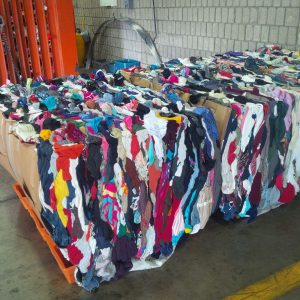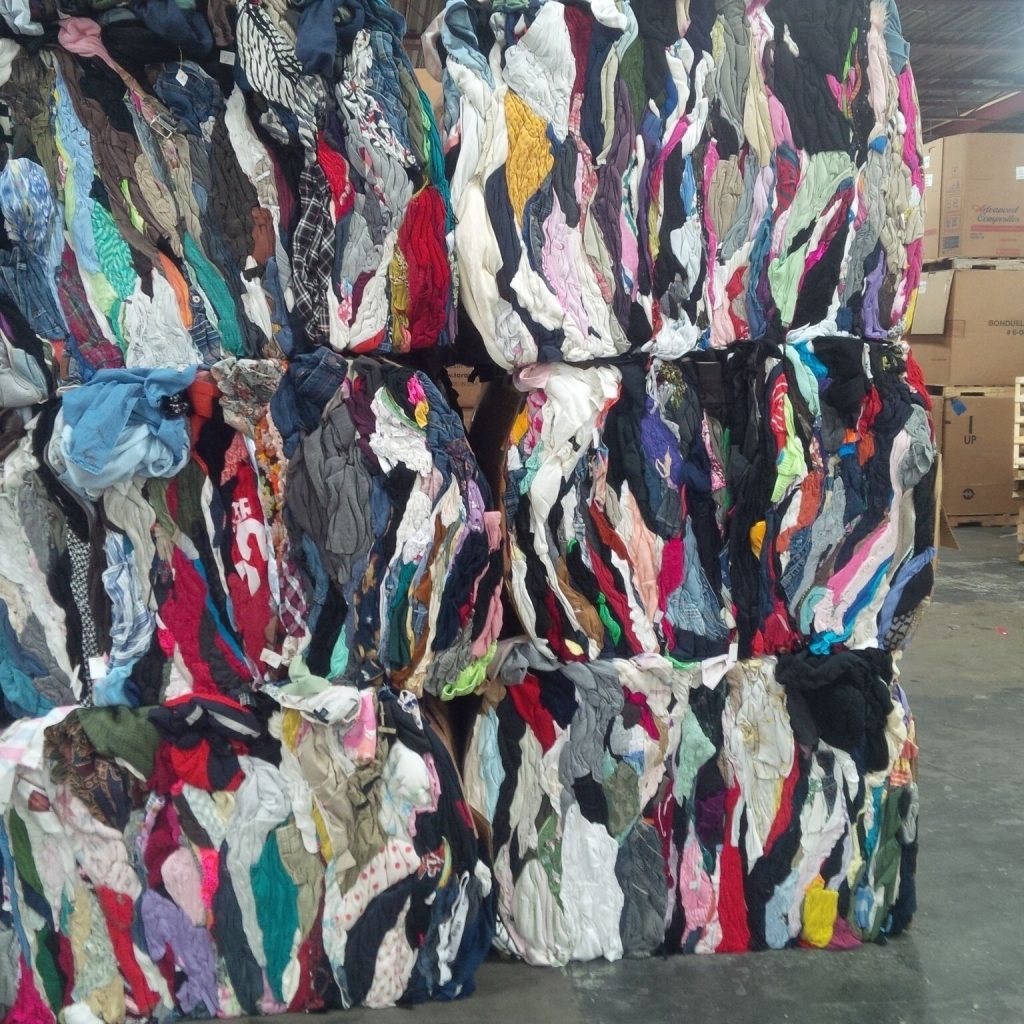Over the last ten years, the market for wholesale used clothing has grown— in part out of necessity. As consumers have increasingly bought more as a result of the rise of “fast fashion,” they have also donated in much greater numbers than ever before. Statistics indicate that in the case of the United States alone, Americans are estimated to donate nearly 5 billion pounds of clothing, shoes, and miscellaneous materials each calendar year. And in terms of waste, according to the U.S. EPA, the annual average of waste per US citizen amounts to nearly 70 pounds of clothing and textiles. The nation’s municipal waste stream occupies nearly 5% of all landfill space — in weight, this totals nearly 13.1 million tons. The EPA reminds consumers that recycling, in light of this ‘crisis of stuff’ is necessary in order to address excessing purchasing, donating, or at worst disposing. The U.S EPA argues that thankfully, as a result of an increasing interest in recycling materials, particularly vis-a-vis items such as mixed rags, nearly 3.8 billion pounds of post-consumer textile waste (PCTW) is recovered each year.
As the donations of used items increase exponentially as a result, thrift stores and vintage shops need to have access to an outlet for excess donations as well as a place to store donations that are no longer unsuitable for resale. Landfills are not a result — not only are landfills really costly for these organizations, but it is also the case that dumping excess donations has a detrimental effect on the environment. The solution has been to recycle items through the process of textile recycling. Not only is this strategy cost saving, but it is also environmentally safe in its intentions. This process requires that recyclers turn old clothing, used linens, shoes and fabrics into new products with a new purpose, and often for new owners.

What Defines Mixed Rags
When we use the term ‘mixed rags’ or ‘institutional clothing,’ we are referring to a category of clothing that is considered ‘used’ that either was not sold in a resale or was not suitable for resale. These items were either the result of store returns, rummages from thrift store locations or discount apparel stores where buyers located apparels and household items. Generally speaking, items become mixed rags for a varied number of reasons, though it often the case that they are designated as imperfect. They may have stains, worn material, rips, broken or jammed zippers or missing buttons or clips. Like many other items that qualify as ‘used clothing,’ mixed rags are first donated to a thrift store or to charity spaces, and if they are not sold to a buyer, they are then removed from the storefront and sent to a warehouse for other buyers to make use of. It is often the case that the materials are first donated, then sorted, cleaned and turned into industrial rags that are called ‘wipers’.
Clothing that is considered mixed rag typically contains unsold used clothing from thrift shops and second-hand stores. These items can be as varied as used shoes, household textiles such as linens and towels, and used clothing for sale in bulk and at deeply discounted wholesale rates to companies that will take on these materials to sell for new buying audiences. It is also often the case that these items will still have a store tag on it (though this not always the case). If pricing tags are still visible, they usually come from the original thrift store location that the item is arriving from.
Now comes the packaging — which is a distinct process for mixed rag items. Usually, mixed rag items are sorted, compressed into bales of clothing, and stored until they can be sold. Once they have a market for sale, they are then sold in bulk and by weight to clothing wholesalers. It is often the case that these materials are packaged in amounts of 800-1200-point bags for their new mixed rag markets. In terms of packaging, mixed rags are usually put together in large bales or kept loose. Those mixed rags items that are packaged in bales are usually comprised of secondhand clothing deemed unsuitable for resale, or alternatively, used clothing items that were marked for resale but failed to sell to a new buyer. Graders (those who determine the nature and quality of the items) will then accept these mixed rags as raw materials appropriate for sorting. Once this decision has been made, these materials are now officially ready for the mixed rag market.
Aside from its cost saving benefits, or the ways in which mixed rag materials significantly impacts the environment in a positive way by diverting items away from landfills, this institution clothing also has additional benefits. These mixed rag items provide consumers with many consumer benefits and pro-environmental strategies that aid in the process of re-directing used materials for usage to a variety of other industries. Statistics indicated that approximately 45% of materials labelled ‘mixed rags’ are sold as secondhand clothing to other domestic or overseas markets. An addition 30% of materials (typically wiping rags for the automotive, home improvement and manufacturing industries) are re-made into rags for industrial markets. A remaining 20% of mixed rag materials are also shredded into fiber. This new product is then used to stuff new products. These items include couches and chairs, carpet padding, and home insulation. The new fiber can also be re-made into and/or towards the production of other miscellaneous materials such as blankets, tablet and phone cases. Of the final 5%, the mixed rag excess is typically tossed. The fear that the remaining output might have been compromised, and therefore deemed unusable due to chemical contamination or water damage.
The Role Bank & Vogue Plays in the Mixed Rags Industry
At Bank & Vogue, we are actively addressing the ‘crisis of stuff’ by actively mobilizing items across the ‘mixed rags’ market. A significant portion of our business involves piecing together mixed rags from various locations across American and Canadian buying publics. We recognize that these materials play an important role in achieving sustainability in the textile industry. And we know that we want to play an active role in helping the industry save resources and protect the environment in an initiative that saves nearly four billion pounds of used clothing from landfills. In order to recycle mixed rags, we typically deal with businesses that range from large and small thrift store retailers, to not-for-profit community-based collectors, and even private collectors and consolidators. This helps our organization remain a competitive and reliable seller of mixed rags materials.
Aside from providing our clientele with mixed rags, which is what they are primarily searching for, we are also incredibly well known for our expertise and attention to packaging detail in particular sorts. At Bank & Vogue we provide our clientele with export loads of loose rather than baled mixed rags — this packaging is generally a part of special orders that our sellers produce. We are happy to offer these services to our clients. Contact us today to find out more and discover what type of source will best serve your business. At Bank & Vogue, our team can provide clientele with the necessary details on shipping and logistics of any mixed rag order they are interested in.







